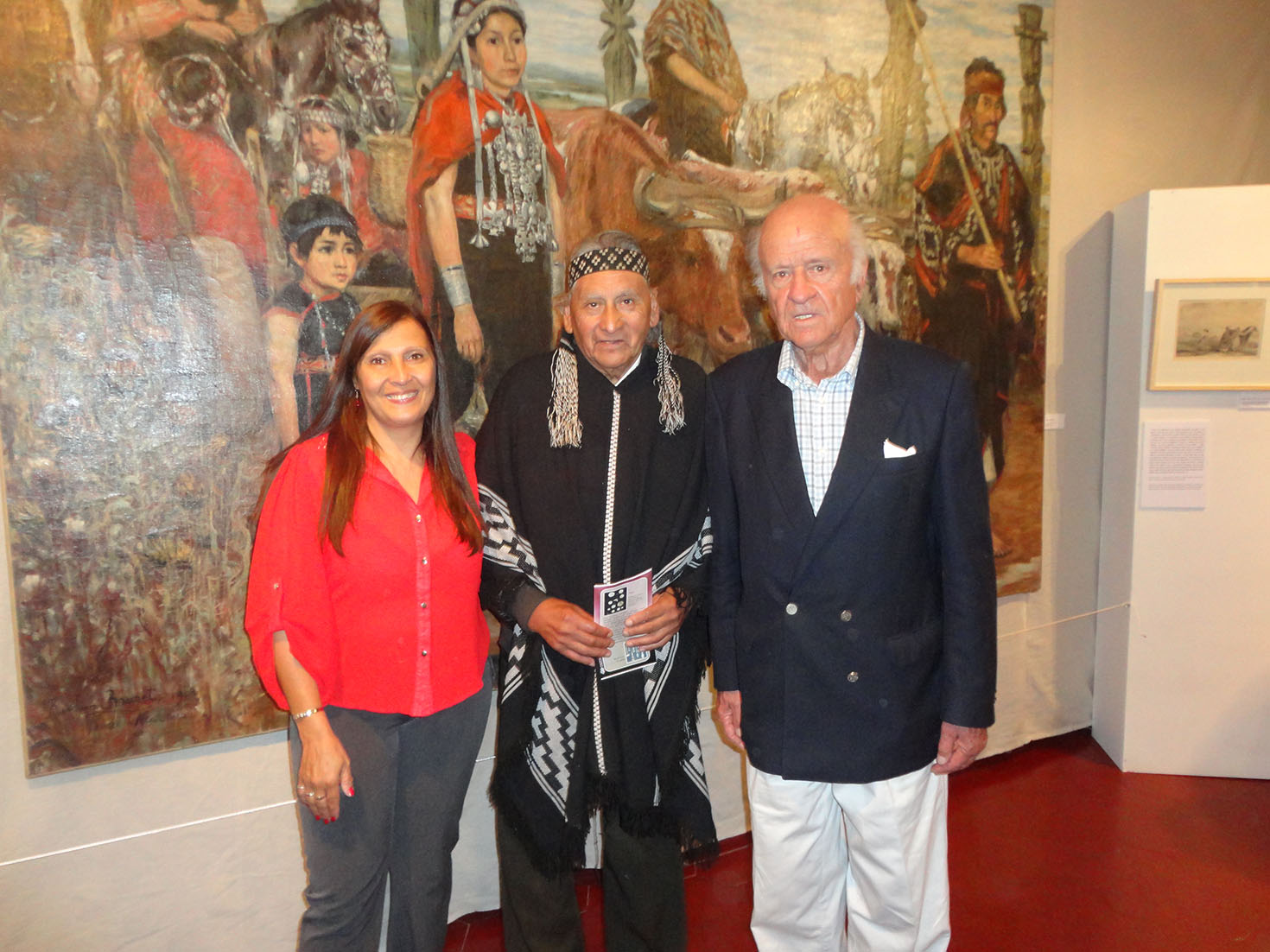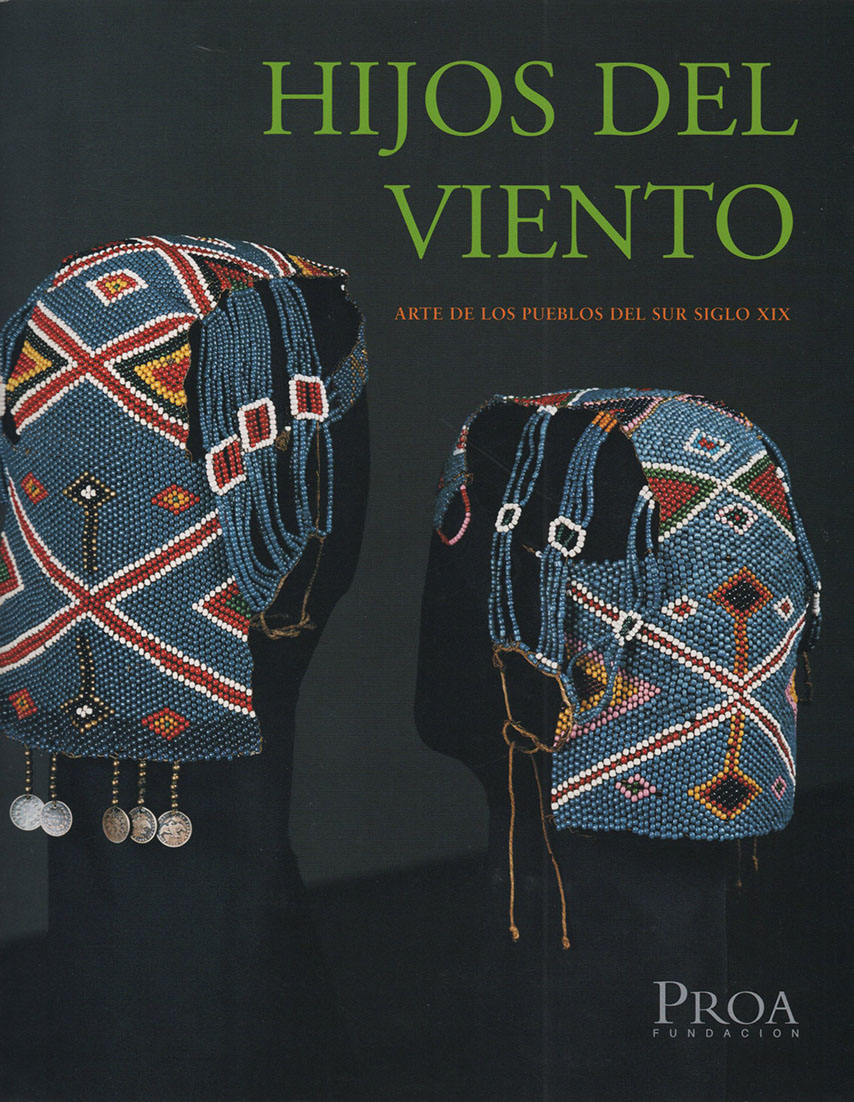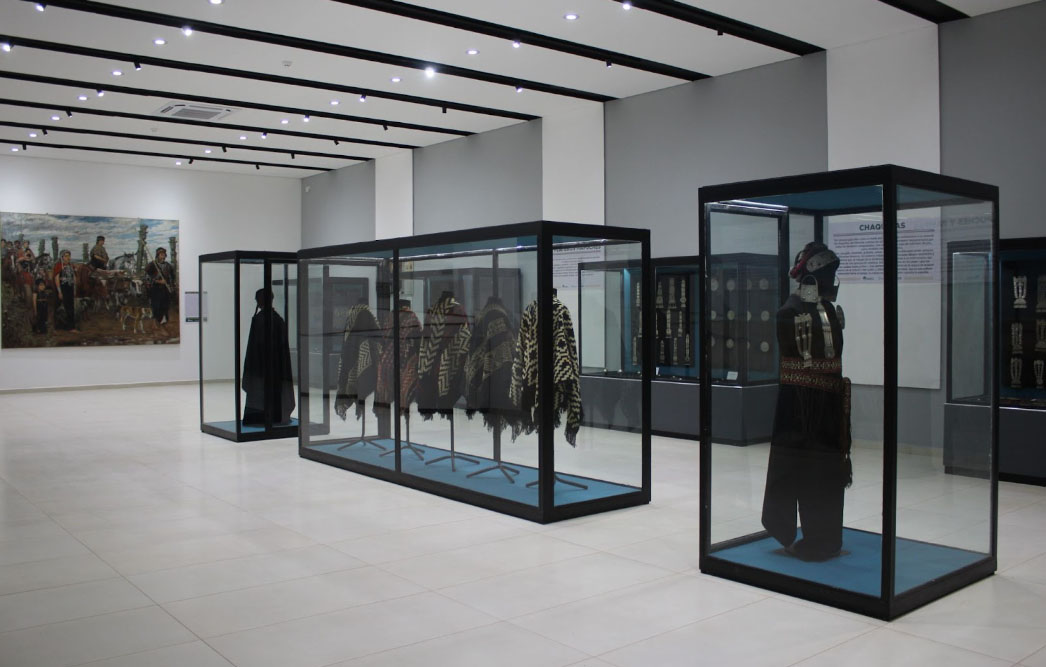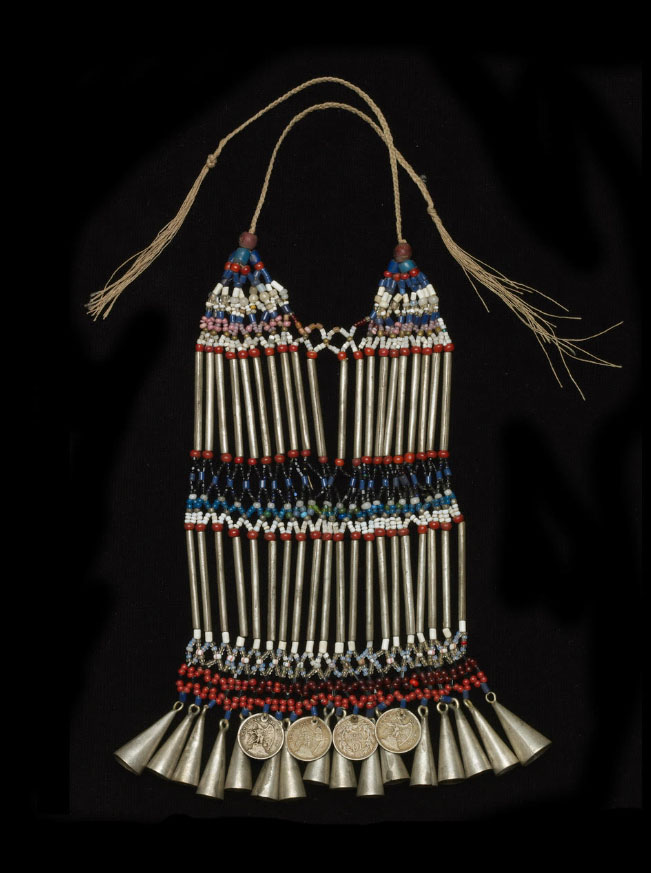The man
Eduardo Pedro Pereda was born in the city of Buenos Aires on September 20, 1926. His parents were the agronomist Eduardo Félix Pereda Girado and Sara María Benedit Chapar. At the age of 17 he began working in livestock farming on the “Nueva Castilla” ranch, acquired by his great-grandfather Celedonio Pereda, in the Buenos Aires district of Trenque Lauquen. He was an important agricultural producer and stood out in institutions linked to agriculture, such as the Argentine Association of Regional Agricultural Experimentation Consortiums (Aacrea), which he presided between 1969 and 1971. In 1999 he was honored by the French government with the Order of Agricultural Merit. He died at the age of 94 on August 8, 2021. He is succeeded by his wife, Estela Lacau Laplace, and his children Teresa, Eduardo and Santiago.
The collection. Its origin
The collection formed by Eduardo P. Pereda was the product of years of searches that began in his early youth. His interest in Mapuche culture began in the field of his elders in Trenque Lauquén with the discovery of indigenous vestiges. And a trip to Patagonia in the summer of 1945 when he was 18 years old encouraged his willingness to collect jewelry and indigenous fabrics, a commitment that accompanied the rest of his life.
His exhibition
In 1995, thanks to the kindness of its owner, I discovered this collection located in the city of Buenos Aires. After having an extensive and friendly conversation based on my book Platería Pampa, which is imminently appearing, Pereda invited me to enter a room whose walls covered in black corduroy along their entire height, highlighted a significant amount of women's silver jewelry, Mapuche style, and many of large size.
The most representative of the mapucherütran [Mapuche silverware] could be seen: tupus, trariloncos, siqueles or sequiles, trapelacuchas, chahuays, nietrohues and others. The material came from the province of Neuquén and the north of Río Negro, the Chilean Araucanía, and the Pampas plain.
It is possible to observe them in the illustrations incorporated into the volume entitled Children of the Wind. Art of the southern peoples. Siglo XIX, published in 2002 on the occasion of the exhibition of part of them, with the sponsorship of the Proa Foundation, of Buenos Aires. The publication has 40 illustrations. To the brief works "From Araucanía to the Pampas" by Rodolfo Casamiquela, and "From the hand of the sacred stones" by Carlos Martínez Sarasola, are added six others, by Victoria Verlichak, Margarita Alvarado, Graciela Suárez, Susana F. Renard , Isabel Iriarte and Teresa Pereda, on the uses and customs of the Mapuche world and their creative capacity [1].
He added that the rest of the collection was carefully arranged in the multiple drawers of a large oak furniture; the characteristic chest of drawers used in the old men's goods stores and that some old haberdashery stores still have, and, as he explained to me, he had other pieces in reserve.
At the end of the room, a large oil painting titled “Temuco in Araucanía” by Richon-Brunet [2] could be seen, representing a group of Mapuche women, with their characteristic clothing and jewelry, one of them in foreground. This fabric served as the background for a scene set up with mannequins dressed in ponchos, sashes, shawls and other objects typical of the context.
“Temuco in Araucanía”: a pictorial work by Richon-Brunet with document value
The oil painting "Temuco in Araucanía" (230 x 320 cm), dated 1903, is due to the brush of the French painter Richard Louis Georges Richon-Brunet, born in Paris in 1866, son of a brigadier general of the French army and grandson of a major general killed in the Malakoff assault. He began his studies in drawing and painting at the School of Fine Arts and was a student in the atelier of Jean Léon Gérôme (1824-1904), Henri Gervex (1852-1929) and Ferdinand Humbert (1842-1934), where he met the Chileans José Tomás Errázuriz and Enrique Lynch del Solar. And then, in the Champs de Mars workshop in Paris, founded by Jean Louis Meissonier (1815-1891) and Pierre Puvis de Chavanne (1824-1898) [3].
His pictorial activity was channeled into genre painting and naturalistic landscape. He obtained his first distinction at the Paris Salon of 1888, and in 1895 he received a bourse de voyage for a painting of his depicting a Breton town by the sea.
Thanks to a scholarship awarded to him in 1896 by the French government, he continued his training in Seville, where he made a well-known series of paintings on local themes, highlighting among them "The Bullring of Seville." There he met who would become his wife, Rosa Ruiz Olavarría, sister of the Chilean consul in Spain.
He arrived in Chile in 1900, commissioned by the French government to study the organization and artistic development of the country, with the aim of strengthening artistic exchange between both nations. In 1902, his painting of a family of huasos was exhibited in Paris.
He was a professor at the School of Fine Arts of Santiago de Chile in two different periods (1903-1906), of which he was also deputy director. In 1910, as secretary general of the Council of Fine Arts in charge of organizing the International Exhibition of the Centennial of Chilean Independence in the recently inaugurated National Museum or Palace of Fine Arts, he wrote its catalog [4]. He developed an intense artistic activity as a professional and is considered the initiator of art criticism in Chile. In an elegant style he expressed his conviction of the need for Chilean painting to take its own direction and free of influences. His knowledge of art was captured in the newspaper El Mercurio and in the magazine Selecta. He also collaborated as an illustrator in El Pacífico Magazine and was Artistic Director of ZigZag magazine.
Distinguished with various awards, courteous and affable, he encouraged established artists and gave his support to beginners, earning the respect of the social and intellectual environment of the time.
The characteristic of his work is inscribed in genre painting, portraits and landscapes, the reflection of traditional scenes and characters, in a pure naturalistic style, always with the imprint of Édouard Manet (1832-1883), whom he knew personally and of whom He collected the loose brushstroke and impasto, the figuration and the moderate light in the composition. In terms of color he had a harmonious and subtle palette, which was linked from the stain.
He died in Santiago de Chile, on April 28, 1946.
Among his notable students at the National School of Fine Arts are the well-known plastic artists Ana Cortés (1895-1998), Pedro Luna (1896-1956), Roko Matjasic (1900-1949), Marco Bontá (1899-1974), Inés Puyó (1906-1966) and Camilo Mori (1896-1973).
The Araucanian in the work of Richon Brunet
A painting of his with an ethnographic theme titled "The Exodus" became famous, regarding which Rubén Darío, who saw it exhibited in Paris, highlighted: "It draws attention for its exotic and rare subject matter, for its picturesque and colorful qualities, and for the detailed observation, the painting by M. Richon-Brunet, L'éxode. The painter, who must be familiar with the Chilean countryside, expresses a tribe of Araucanians on a journey. A certain theatricality of the figures could perhaps be criticized, but the work is of indisputable merit" [5].
And linked to this theme, we cannot overlook her disciple Celia Leyton Vidal (1895-1975), very original in her treatment of faces, figures and scenes of indigenous life in the Mapuche world, which she was personally able to capture in Temuco. [6].
The antiquity of women's jewelry. The case of the sequil or shekel
Although the title of the catalog Children of the Wind limits its content to the 19th century, it can nevertheless be extended to the 20th, since at the end of the first, in Chile, the tupu, a pin in its flat or orange-shaped ball forms, was replaced. called ponzón, after the sequil acucha or sequil, a three-chain pin whose shape reflects the technical changes, since it concludes a design that began with the sequil of vertical plates. To this new design, which maintains the horizontality of the previous sequil of plates, a larger upper plate is incorporated, which maintains the trapezoidal shape from which the three chains hang, but interspersed with the shape decorated with incisions, of two birds that They face each other, from which they suspend two generally anthropomorphic pendants located in the spaces left by the chains, which end in a trapezoidal transverse plate, oriented obliquely in the middle part of the chains, from which smaller pendants hang. This was the most popular ornament of Araucanian women in the 20th century, where some made of very low quality or with some of their bronze parts appear [7].
The parts trade
Tomás Guevara Silva (1865-1935), Chilean professor, politician and intellectual, who was present at the end of the 19th century and the first decades of the 20th in the national academic circles of his country, dedicated much of his work to research on the people Mapuche, its history, society and culture, in ten volumes. In one of them, which appeared in 1913, he pointed out that in Chile there had flourished an industrialized production of Mapuche women's jewelry especially dedicated to tourist consumption "because the Mapuche sell them to montepíos and collectors or exchange them for animals in the Argentine Republic" [ 8]. That same year, Juan B. Ambrosetti, director of the Ethnographic Museum of Buenos Aires, sent 300 pesos to Guevara, a resident of Temuco, so that he could invest that important sum in acquiring Araucanian silverware and textiles for the Museum, with which he bought, after rigorous selection, a silver pin, a necklace with a fabric lining, a headband, two pendants, a punch, two rings and a "nitrove" to tie the braids, very expensive and scarce, costing 25 pesos, the same as the pin. of silver [9].
In the summer of 1924 Bartolomé J. Ronco (1881-1952) visited the city of Temuco, which at that time was frequented by many illustrious travelers and it was fashionable to buy Mapuche clothing and jewelry there. There he acquired an important lot of silverware in the “El Globo” store and bazaar, and in the “Banco del Pobre”, both owned by García Hermanos, and in the “La Bienhechora” store owned by Atilano García y Compañía; All of them served as montepios or pawn shops, offering a wide variety of them for sale. In 1940, Ronco donated these pieces among many other Mapuche pieces, especially textiles, to the future Ethnographic Museum of Azul (province of Buenos Aires), open to the public in 1945 [10].
The law of silver used in Mapuche jewelry
Hippolyte Janvier (1892-1986) referred to it, when in 1928 he was still Brother Claude Joseph: «The client who requests the professional services of the Mapuche silversmith brings him the money necessary to make the requested garments and also another equal amount in payment of the job. The salary of the architect is thus one hundred percent. He needs 5, 10, 20 or 40 cent coins to melt them comfortably. He also accepts coins of one peso and pieces of silver of a certain thickness, but naturally it is more difficult for him to melt them. He doesn't want to use the new coins because they contain too much copper. He melts them with great difficulty and only achieves smoky-colored decorations with them. “Before, an old Mapuche told me, we had a lot of chauchas and good money; Later we had few and bad money; Now we have paper, which is even worse” [11].
Let us add in this regard that, regarding the grade of silver used in the pieces, the Chilean silversmiths of the 19th century, until 1879, worked by melting coins of silver circulating in that country of 0.9 fine, which means that 9 parts were of silver and one of another metal, for example copper, which is what was alloyed with silver in Chilean coins. Since the law promulgated on June 14, 1879, there has been a growing decrease in the grade of fine metal, that is, in its percentage of silver. In the smallest division coins, which were preferably those that were melted, because their smaller size made the process easier, the fine fell to 0.5 and later in 1907 the currency law fell to 0.4, a fine that was It remained until 1920 for the 5, 10 and 20 cent coins, when they were replaced by nickel coins. Strong pesos, coins with percentages of silver, existed in Chile until their last issue in 1932, with a fine of 0.400. The current currency began to have a high content of nickel and copper. And since the manufacture of Mapuche jewelry was made with the Chilean currency, this caused the jewelry to have a color that silversmiths call smoky, very different from that of jewelry made in the previous century. In the most current ones the percentage of silver is even lower, 0.200, or it does not exist.
Collection destination
It was the will of Mr. Eduardo P. Pereda, expressed during his lifetime to his family, that the outstanding pieces of his collection would integrate the historical heritage of a museum, at the disposal of the community. It was thus that, fulfilling that wish, his children Teresa, Eduardo and Santiago Pereda told the municipal mayor of the Buenos Aires city of Trenque Lauquen, Miguel Fernández: «It is our wish to fulfill the wish of our father Eduardo P. Pereda that the collection be housed in public institutions, such as the Regional Historical Museum of Trenque Lauquen, an institution and city to which he was linked from a very young age, at the beginning of his work activity. We trust that the Museum will be able to house, preserve, guard, disseminate, reread and investigate the heritage gathered by Eduardo P. Pereda that constitutes the collection that receives the name “Children of the Wind.” By Municipal Ordinance No. 5456/2023, the donation was accepted, consisting of five hundred and fourteen objects, part of the collection called "Children of the Wind", duly identified in an attached catalog, destined to form part of the Municipal Heritage and be exhibited in the Museum Regional History of Trenque Lauquen. The donation consisted of just under 300 silver or mixed pieces [in silver and fabric] that were part of the female trousseau of Mapuche women, 19th century; in addition to fabrics from women's trousseau (chamales and sashes), and men's trousseau (6 ponchos), and the oil painting "Temuco in Araucanía" by Ricardo Richon-Brunet.
Five of the donated ponchos, in their ad hoc display case at the Trenque Lauquen Museum. Photography: Teresa Pereda.
Pereda had presented her collection for the first time in this city in 1998, and returned with another set of works in 2013.
The city of Trenque Lauquen has six museums, plus three others located in towns in the district.
The Historical Regional, founded by Luis Scalese, who contributed his private collection to give substance to this initiative together with Francisco Mayo in 1944, is located at 1150 San Martín Street. Provincial museum since 1951 (until the 1980s, when it was municipalized ), in 1963 he received as a donation from the "Enrique Udaondo Museum Complex" the gold and silver spurs and double-pointed gala spear of General Conrado Excelso Villegas, and in 2003 some boleadoras from Pincén, chief of the tribe whose descendants live in the zone. In 2010 the institution recovered its original name of Regional Historical Museum.
Once the remodeling work was completed, on December 10, 2023, the museum reopened its nine pre-existing rooms and one new one, intended to exhibit the Children of the Wind collection. The event was attended by Mrs. Estela Lacau de Pereda and her children Teresa (curator of the collection and in charge of classifying the pieces, assisted by a team made up of Sol Barcalde, Isabel Iriarte, Patricia Lissa and Ana Ruiz Luque) and Eduardo . The latter, when highlighting the work done by his father, expressed: «Today we are happy because we fulfilled my father's wish: that this collection be housed in a public institution such as the Regional Historical Museum so that the entire community can enjoy the collection", highlighting the commitment of the Trenque Lauquen community.
For her part, Teresa Pereda, a well-known plastic artist, expressed on behalf of the donors: "we bequeath to the Municipality of Trenque Lauquen the total responsibility of ensuring and giving continuity to this legacy and the fulfillment of the objectives of documenting a historical time, rescuing the documentary value of these objects," and added that the collection constitutes "a contribution to the study of this ancestral culture that lives on in our country."
Showcases with Mapuche silverware and textiles, in the room built and equipped to house this heritage. Photography: Inés Maya.
Furthermore, to understand the importance of volume that the Pereda donation represents, it is enough to keep in mind that in Chile the famous Doyharçabal collection amounts to a number close to 350 objects, including 250 of silverware, lithics, pottery, basketry, woodwork and other materialities. For its part, the municipality of Los Angeles, in the neighboring country, in 2003 received, as a donation from that city's doctor Raúl Morris von Bennewitz, his collection of nearly 1,200 pieces, which includes Araucanian silverware (female ornaments and implement pieces). , dating from the 18th, 19th and early 20th centuries, originating from the region of the country close to the Alto Bío Bío region, show.
In our country, the names of the donors of Mapuche, Pampa, or rather Lelfunche, and Ranqueline silverware to public museums or belonging to private institutions, since the beginning of the 20th century, are well known. That list includes Indalecio Gómez, Lucio V. Mansilla, Julio A. Roca, Estanislao S. Zeballos (who owned more than 200), María Elena Holmberg de Ambrosetti (she had almost a hundred), Manuel Montes de Oca, Eloy de Stoecklin ( nephew of George Claraz), and among many others, Bartolomé J. Ronco. The entrance of the collection formed by Eduardo P. Pereda to the Regional Historical Museum of Trenque Lauquen, as the last link that closes that chain of illustrious benefactors, is its finishing touch.
Notes:
[1] Children of the wind. Art of the southern peoples. XIX century. Buenos Aires. Proa Foundation, 2002. 80 p.
[2] This work was acquired by E. P. Pereda at the L'Amateur bookstore in Buenos Aires.
[3] I have taken the basic biographical data of Richon Brunet from the Album de la Colonie Française au Chili. Proprietary Editor M. Vega E., Santiago de Chile, Imprimerie et Litographie Franco-Chilienne, 1904, p. 108, with a portrait of the aforementioned plastic artist.
[4] International Exhibition of Fine Arts. Santiago de Chile, Illustrated Official Catalog. Santiago de Chile, Imprenta Barcelona, 1910. 247 p.
[5] Rubén Darío. Parisian. Illustrations by Enrique Ochoa, Madrid, Ed. Mundo Latino, 1917, p. 189.
[6] Celia Leyton Vidal in her volume Araucania the face of a haughty race (Santiago de Chile, Zig-Zag, 1945) reproduces it in 45 finely printed plates in full color. her own paintings with types of the Mapuche race and especially of women with their jewelry, which she was able to observe in the Temuco area. There is a second edition from 1953 with 108 p.
[7] I have addressed these issues in various works published in the last four and a half decades. Cf. Guillermo Palombo, "Alhajas y adornments pampas", in El Tiempo, Azul, February 11, 18 and 25, 1978; Platería Pampa, Buenos Aires, Buenos Aires Institute of Numismatics and Antiquities, 1995. 78 p.; "Silver pieces by Cándido Silva to give to the tribe of Catriel (1856-1857)", in Nuestra Platería, no. 4, Buenos Aires, 1996, p. 14-15; «Bibliography on Araucanian and Pampa silversmithing», in Nuestra Platería, n. 5, Buenos Aires, 1996, p. 28-29; and «Silver jewelry and feminine ornaments used in the Pampa (Lelfunche) tribe of Catriel. Descriptive guide on the use of the Mapuche jewelry existing in the Ethnographic Museum of Azul", in the Special Supplement History and concepts of the Pampa Platería (August 2017), distributed by Pregón. Regional Evening Newspaper, no. 18,276, Azul, August 22, 2017 (16 p).
[8] Tomás Guevara. The last Araucanian families and customs, Santiago de Chile, Imprenta Barcelona, 1913, p. 234 (Volume VII of the series).
[9] Andrea Pegoraro. The collections of the Ethnographic Museum of the University of Buenos Aires: an episode in the history of Americanism in Argentina, 1890-1927, vol. 1, Buenos Aires, 2009, p. 220-221 (Doctoral thesis in Philosophy and Letters, tutored by Irina Podgorny).
[10] Palombo. Descriptive guide on the use of Mapuche jewelry existing in the Ethnographic Museum of Azul, cit. Palombo. The collection of Bartolomé J. Ronco, in Hilario Magazine No. 33, December 2023.
[11] Claude Joseph. "La platería araucana", in Anales de la Universidad de Chile, series 2, year 6, January-December 1928, Santiago de Chile, p. 117-158.
* Special for Hilario. Arts Letters Trades



